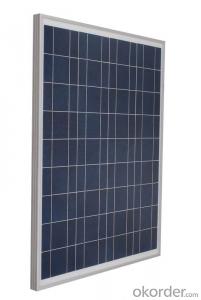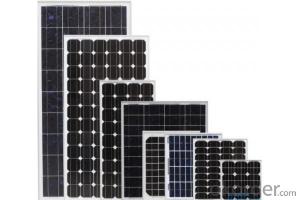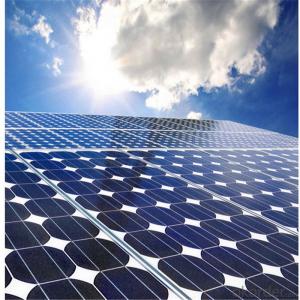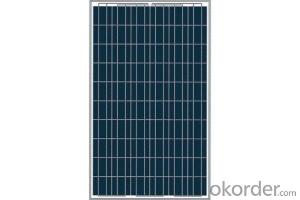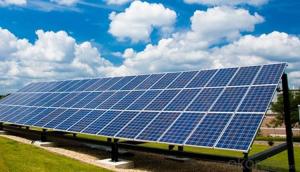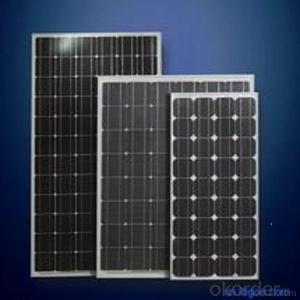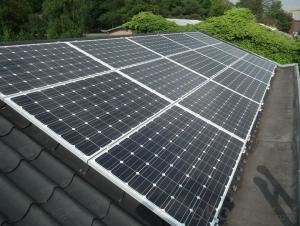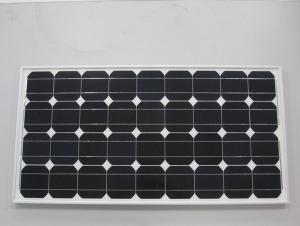Exiom Solar Panels - Directly Sale High Efficiency 70W Poly Solar Module
- Loading Port:
- Tianjin
- Payment Terms:
- TT OR LC
- Min Order Qty:
- 100 watt
- Supply Capability:
- 10000 watt/month
OKorder Service Pledge
OKorder Financial Service
You Might Also Like
Specification
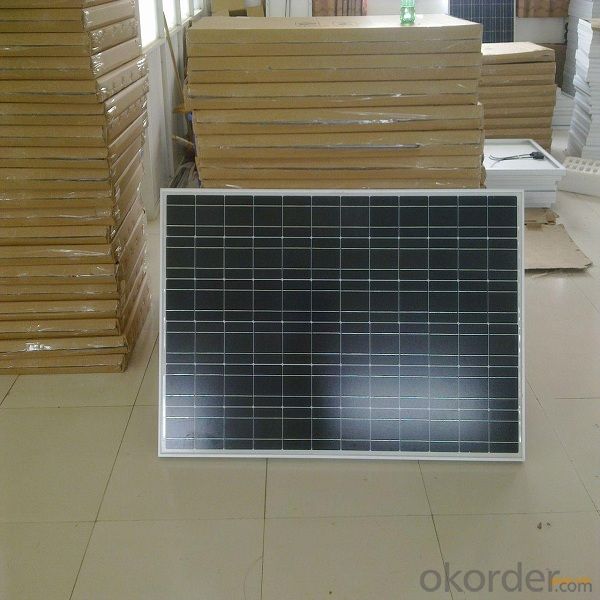
Quality Ensurance:
1. Excellent A Grade solar cell from Motech or Hanwha solar.
2. Excellent backsheet from SFC, 3M;
3. EVA from Bridgestone / First;
4. Junction box with UL and TUV listed - GZX, IP65;
5. High transmission low iron tempered glass from Xinyi Glass - China Top 1;
6. Solar panels with TUV, CE, ISO9001 certified.
Strong, lightweight aluminum frame design with reinforced sealing and load hold to prevent freezing and warping, and stand against high wind.
Under Standard Test Conditions(STC): Irradiance of 1000W/m2, Am1.5 and 25ºC cell temperature
Operating Temperature: -40 ~ +85° C
Storage Temperature: -40 ~ +85° C
Mechanical Characteristics
Dimensions: 771mm(L) x 665mm(W) x 35mm(H)
Weight: 6.1kg
Solar Cells: Polycrystalline solar cells, 36 cells in a 4x9matrix connected in series
Module Warranty:
25-year limited warranty of 80% power output; 10-year limited warranty of 90% power output;
5-year limited warranty of materials and workmanship.
Application: Solar streeting light, Solar pump, Solar home lighting system; Portable Solar System etc.
| Performance | ||
| Rated Power[Pmax] | 70W | |
| Power Tolerance | ± 3% | |
| Nominal Voltage | 18.28V | |
| Design Life | 25 years | |
| Electrical Characteristics | ||
| Maximum Power [Pmax] | 70W± 3% | |
| Maximum Power Voltage [Vmp] | 18.28V± 3% | |
| Maximum Power Current [Imp] | 3.83A± 3% | |
| Short-Circuit Current [Isc] | 4.22A± 3% | |
| Open-Circuit Voltage [Voc] | 22.0V± 3% | |
| Current Temperature Coefficient | 0.08%/º C | |
| Voltage Temperature Coefficient | - 0.32%/º C | |
| Power Temperature Coefficient | -0.38%/º C | |
| Maximum System Voltage | 1000V | |
- Q: What is the purpose of solar panels?
- The purpose of solar panels is to convert sunlight into usable electricity, providing a clean and renewable energy source for various applications such as powering homes, buildings, and even vehicles, while reducing dependence on fossil fuels and mitigating environmental impact.
- Q: i check the diodes in the backside of solar panels it reads out to be 0.433 each give me the same result but i was amazed when i check out the last two one which on clamp meter screen give me ''0L'' what this means? is that diode have malfunctions??is this reasons that the output of solar has been decreased?
- First of all, make sure that you are taking readings in the dark (with the solar panel indoors and covered). 0.433 is a reasonable forward voltage for a Schottky diode. Ideally, it diode should read open one way (possibly OL for your meter), and 0.4 the other way. If it's reading OL both ways, the diode is bad. You can either unsolder it or cut it out and verify that it is bad.
- Q: if car companies install solar panels on cars, like in all the car were the sun can reach that would reduce the consumption of gas in the summer, and might save some energy for winter and if that energy is not enough they can use gas or electricity i think that would be a lot of savings, and less contamination i don't know that is my idea what do you people think?
- I have a panel that might be a square foot or so plugged into my cigarette lighter. It will run the radio and help with reducing the amount of time the alternator needs to run, but won't completely run the vehicle. If I had an electric vehicle, I'd want to coat any large surfaces with them. Still wouldn't completely run the vehicle, but every bit would help.
- Q: Can solar panels be installed on schools or universities?
- Yes, solar panels can definitely be installed on schools or universities. In fact, many educational institutions are taking advantage of solar energy to reduce their carbon footprint and save on energy costs. Solar panels can be easily installed on rooftops or open spaces within the campus, providing clean and renewable energy for various electrical needs of the school or university.
- Q: How do solar panels affect the overall energy consumption of a building?
- Solar panels can significantly reduce the overall energy consumption of a building. By harnessing renewable energy from the sun, solar panels generate electricity, which can be used to power various appliances and systems within the building. This reduces reliance on traditional energy sources, such as fossil fuels, thereby lowering the building's energy consumption from the grid. Additionally, excess energy produced by solar panels can be stored in batteries or fed back into the grid, further offsetting the building's energy consumption. Overall, solar panels contribute to a more sustainable and energy-efficient building by reducing its overall energy needs.
- Q: I am working on a project and I have to build a house with solar panels. My teacher asked me how would I get solar energy if it is rainy or cloudy? I looked it up but didn't understand. Please help me!!
- Solar panels convert light energy into electrical energy with the photovoltaic process. They work best when perpendicular to the incoming sunlight and with no clouds in bright sunlight. They will work at reduced efficiency if there are clouds or rain, but as long as its not dark, they will still produce some electricity. That is one of the real problems with solar energy, as we expect to have electricity available on demand, regardless of day/night cycles and atmospheric conditions. Storing electricity is very inefficient, so we need hydro, nuclear,or fossil fuel energy to provide firm on demand energy as a base load.
- Q: Can solar panels be used in cloudy regions?
- Yes, solar panels can still be used in cloudy regions. While solar panels do work best under direct sunlight, they can still generate electricity from diffused or scattered sunlight present in cloudy conditions. However, the overall energy output may be lower compared to sunny regions.
- Q: I am building a solar car for the energy wiz competition and I was wondering how I could possibly get my solar panel to shift sideways
- having solar panels move like that on a mobile platform is inadvisable -- especially if there is a dynamic wind load resulting from the motion of the mobile platform. Even having a tilt mechanism is dubious at best. think of what limited marginal gain would be gained by mounting a small solar panel on the moon roof of a car. (ultimately, the best answer is to turn the car so that it's angle to the sun is optimal -- but the road/travel direction constraints are what ultimately prohibit that.) while there are ways to build sliding panels, the weight constraints would interfere with your weight/thrust ratios to the point of futility. if you really need that panel somewhere else, don't slide it out of the way, just buy another panel and mount it there. it's more expensive, but it's actually the cheapest solution in terms of design on a mobile platform.
- Q: Can solar panels be used to power a drone?
- Yes, solar panels can be used to power a drone. By harnessing sunlight, the solar panels can convert the energy into electrical power that can be used to charge the drone's batteries or directly power its motors. This enables drones to have longer flight times and potentially operate in remote areas without the need for frequent battery replacements. However, the practicality and effectiveness of solar-powered drones may depend on factors such as the size and efficiency of the solar panels, weather conditions, and the power requirements of the drone.
- Q: How efficient are the solar panels....?
- There is over 000 watts of power in a square meter of sunshine. A square meter panel converts only about 20% of it into electricity (200 watts). At my workplace, I have a photo-voltaic solar panel electrical system. Its maximum capacity is about 25 kilowatts. On a sunny day it will produce about 80 kilowatt hours of electricity, but we average about 50 kwh/day. At current value, that adds up to a saving of about $4,000 per year, which sounds nice but that's only about a tenth of my total power bill. The system cost $00,000. Pay-back is 25 years (which by coincidence is the length of the warranty). To answer your question more directly: solar panels are not quite efficient enough to be economical.
Send your message to us
Exiom Solar Panels - Directly Sale High Efficiency 70W Poly Solar Module
- Loading Port:
- Tianjin
- Payment Terms:
- TT OR LC
- Min Order Qty:
- 100 watt
- Supply Capability:
- 10000 watt/month
OKorder Service Pledge
OKorder Financial Service
Similar products
Hot products
Hot Searches
Related keywords
